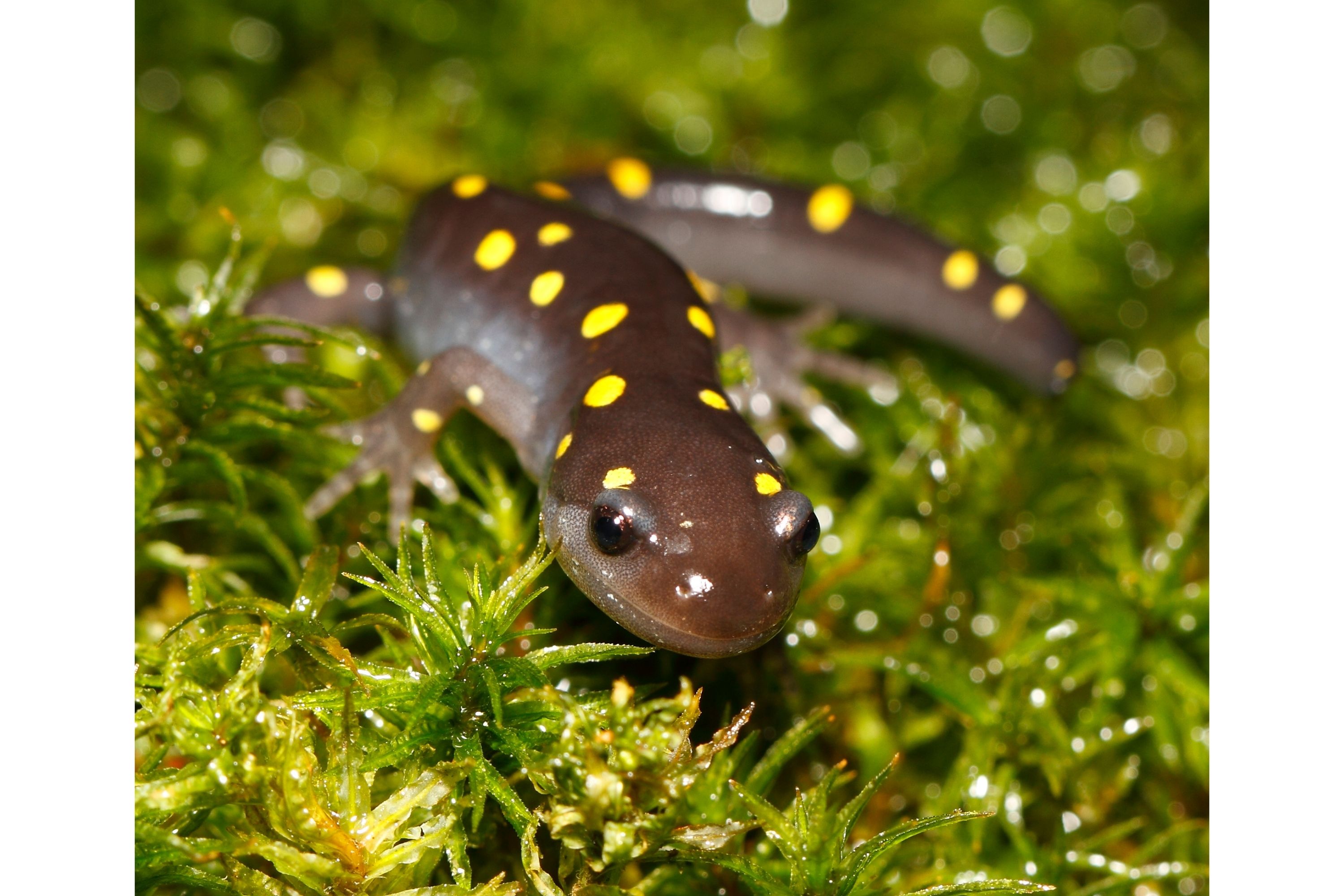Spotted salamander
(Ambystoma maculatum)

Description
The spotted salamander or yellow-spotted salamander (Ambystoma maculatum) is a mole salamander common in eastern United States and Canada. The spotted salamander is the state amphibian of Ohio and South Carolina. This salamander ranges from Nova Scotia, to Lake Superior, to southern Georgia and Texas. Its embryos have been found to have symbiotic algae living inside them, the only known example of vertebrate cells hosting an endosymbiont microbe (unless mitochondria are considered). The spotted salamander is about 15–25 cm (5.9–9.8 in) long. They are stout, like most mole salamanders, and have wide snouts. The spotted salamander's main color is black, but can sometimes be a blueish-black, dark gray, dark green, or even dark brown. Two uneven rows of yellowish-orange spots run from the top of the head (near the eyes) to the tip of the tail. The spotted salamander's spots near the top of its head are more orange, while the spots on the rest of its body are more yellow. The underside of the spotted salamander is slate gray and pink. The spotted salamander usually makes its home in hardwood forest areas with vernal pools, which are necessary for breeding. They cannot breed in most permanent pools because the fish inhabiting the pools would eat the salamander eggs and larvae. Salamander populations from nearby pools form genetically-distinct Metapopulations. Subpopulations within 4.8 kilometers share a higher proportion of genes, while populations greater than 4.8 kilometers share a smaller proportion of genes. Inter-population dispersal is likely mediated by both species-specific behaviors and natural limitations. Ambystoma maculatum has several methods of defense, including hiding in burrows or leaf litter, autotomy of the tail, and a toxic milky liquid it excretes when perturbed. This secretion comes from large poison glands around the back and neck. The spotted salamander, like other salamanders, shows great regenerative abilities: if a predator manages to dismember a part of a leg, tail, or even parts of the brain, head, or organs, the salamander can grow back a new one, although this takes a massive amount of energy. As juveniles, they spend most of their time under the leaf litter near the bottom of the pools where their eggs were laid. The larvae tend to occupy refuges in vegetation, and lower their activity in the presence of predators.
Taxonomic tree:







